Four Seasons on The Farm and in the Home
By 1836 George Jr., William and James each had their own farms. They worked as a team on the now four Copping farms. George Sr. had also added more land to the homestead. The boys were clearing this continually increasing land, building their homes and barns, attending to the seasonal field work, and producing the monthly barrel of pearl ash.
Much of the work was done with frequent working bees at home and elsewhere. One might wonder how they remembered where or what lay ahead each day.
As the patriarch aged he no longer went to the bush nor attended working bees. He was kept occupied fencing the ever expanding clearing, looking after the animals and some field seasonal work. He also took care of the busy ever expanding trade on the farm. He sold surplus hay and grain, his reputation for the quality of the produce and seed quickly grew and soon was not able to supply the demand.
The boys exchanged farm equipment, ox, or horse. Joseph was now doing much of the delivery and fetching of the various items. Items not being used by the family were loaned out. There seemed to be a steady stream of people passing through the farmyard.
George was a busy man also very much preoccupied in community activities, particularly the church and schools.
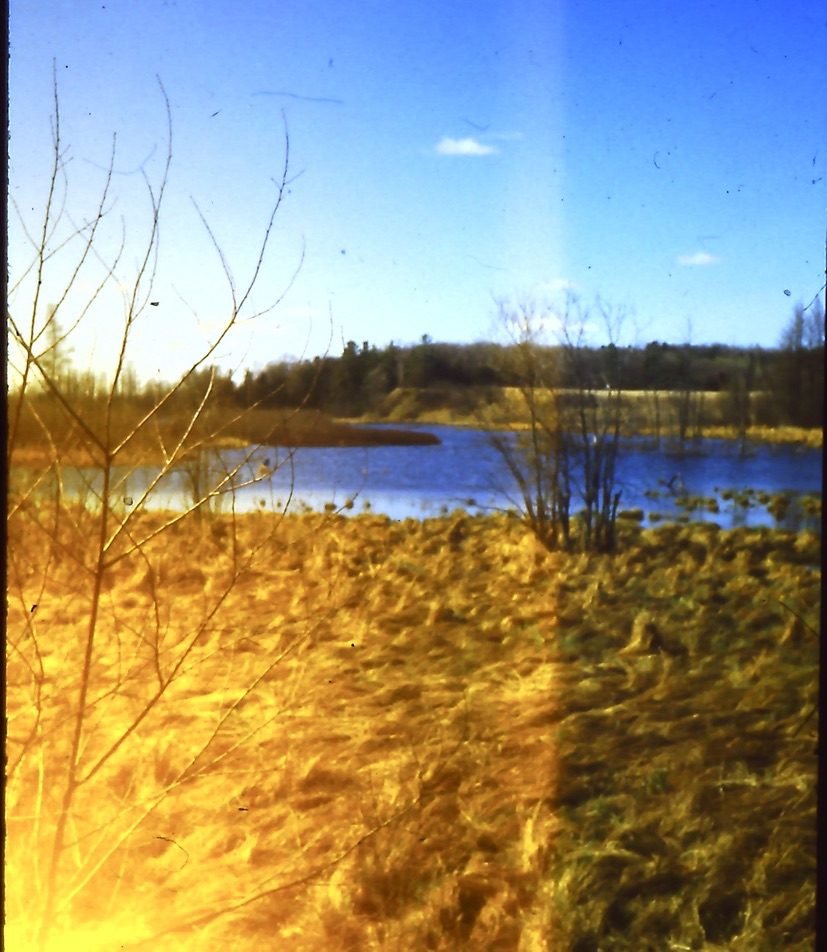
Spring
George and the boys continued cutting and clearing adding more and more cultivated land. The hardwood that was not needed for heating was made into potash.
Spring was a busy season. Once the days had become longer and the day time temperature rose above freezing and the night time temperature dropped below freezing, it was tapping time. Originally only sugar was made but soon syrup was also made with the sap.
All hands were involved in the sugar bush. George and the older boys did the heavy work, breaking the road, tapping and gathering sap. Then while they went back to their potash George and the girls gathered the sap. The younger boys hauled wood for the fire and Elizabeth boiled the sap.
Over the years the Coppings made sugar and syrup for their own use as well as for market. They usually made over 200 pounds of sugar during the season.
As the boys got their own lots, they established a sugar bush, as well. Henry’s son, Henry, had
one of the most modern sugar cabins in the area. In 1902 he won the Gold Maple Award for the best maple syrup in Canada.
As soon as the maple sugar was done, fencing was built or repaired and preparation of the fields began. Land that had not been ploughed in the fall was attacked with a plough. A grubber was used to loosen the soil around the stumps.
The first spring, 1823, the Coppings were settled on their land there was a considerable acreage to prepare for seeding.
The soil around the stumps was loosened using a grubber, the seed was dropped and covered over.
That first spring corn, potatoes and wheat was planted.
Every spring there was more ground plant.
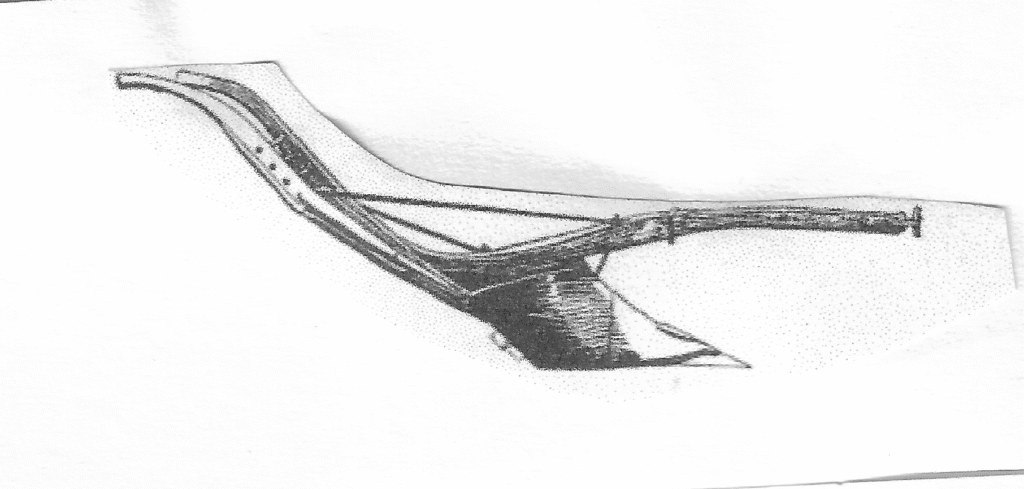
Plow With Metal Knives
Later this type of plow with metal knives was also made on the farm. The knives were purchased from the forge were much more practical.
The ground was plowed, sometime an oxen, or using a horse. Oxen were much better suited to this task and were much more economical than a horse.
As stumps were pulled out or rotted enough to be plowed out, more and more field was available for planting. The ground was plowed, sometimes using the oxen.
The field was then harrowed in both directions, seed spread by hand and then harrowed over to cover the seed.
In 1837 there were still areas being cleared and George was still planting cabbage seeds in new ground between the stumps.
The field was then harrowed in both directions, seed spread by hand and then harrowed over to cover the seed.
Bears and raccoons also enjoyed visiting oats fields and corn fields not only feasting on the oats or corn but causing much damage. Many farmers planted pumpkins with the corn as the rough leaves tended to deter bears and raccoons.
Whenever there was evidence of a bear in the vicinity a hunt was organized but might not necessarily be successful. The prey was sometimes craftier than the hunters.
In the fall of 1836 the bears were particularly interested in visiting the field crops and causing much damage. Despite efforts made to catch the thieves, wily creatures that they were appearing only after dark, the bears continued to plague the settlers until the end of the harvest.
They returned in the spring to continue harassing the settlers. May 29, 1837 the news that a bear had killed one of Mr. Polllock’s cows instigated immediate action among the men in the immediate neighbourhood. The boys picked up their muskets and joined their neighbours in the hunt. Despite their best efforts the bear eluded the hunters and all returned most disappointed at the end of a long day.
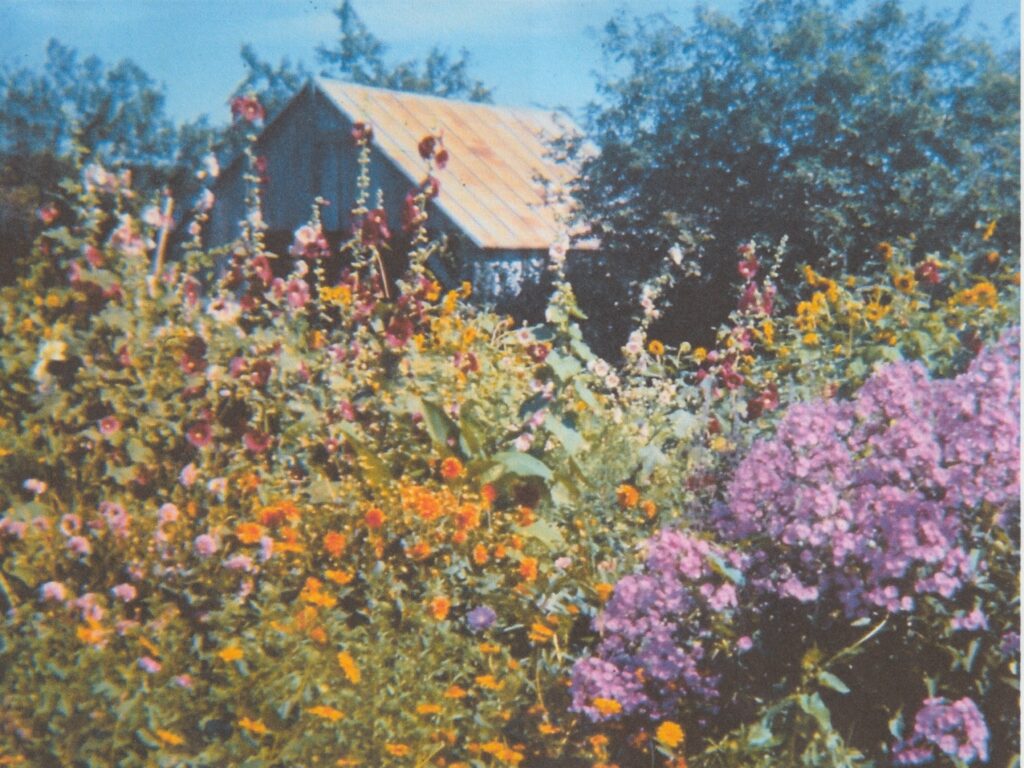
Summer
If the cold and snow winter provided many challenges, summer also had his difficulties. Sun stroke and heat prostration were common afflictions for those who did not take proper precautions. The Coppings had been in Canada for 10 years before they came to Rawdon and were thus better accustomed to the extreme temperatures than many of their neighbours. Despite this they still had to contend with working in the heat and humidity of the summer months.
Bloodthirsty invaders in the form of black flies and mosquitoes were constant plague spring through fall. Fly bites left their victims looking perfectly hideous with face and neck swollen and blood trickling down from their face and ears. An infected ear might even cause deafness.
Settlers had little defence against these tormentors. Vinegar, lemon oil, or lavender, were the only options available but they were not particularly effective. George frequently complained about the flies pestering the animals as well as humans. They were merciless in the fields and in the bush. George’s comment, “The black flies have become a real nuisance now” says it all.
Haying was done without the help of automation and was considered one of the hardest tasks facing farmers made worse by the fact it was done in the hottest season, beginning in July and completed in August. An early start cutting before sunrise meant working in the cooler morning as well as hay was considered easier to cut when the dew was still on. About noon the field was left to do other chores returning to the cut about four in the afternoon when the worst heat had passed.
The first year there was very little hay for winter feed to be had. What little wild hay or grasses that could be found growing wild was cut and stored.
George was scrupulous about fertilizing his fields and the rotation of crops and pasture. As each field was cleared it was rotated and fertilized assiduously. The result of his good management soon produced enough to sell both seed and hay. Throughout spring and winter hay and grain was sold to his many customers.
Flax was another crop grown on the farm. The ladies were mostly responsible for this production from planting, to harvesting, and finally spinning and weaving the linen.
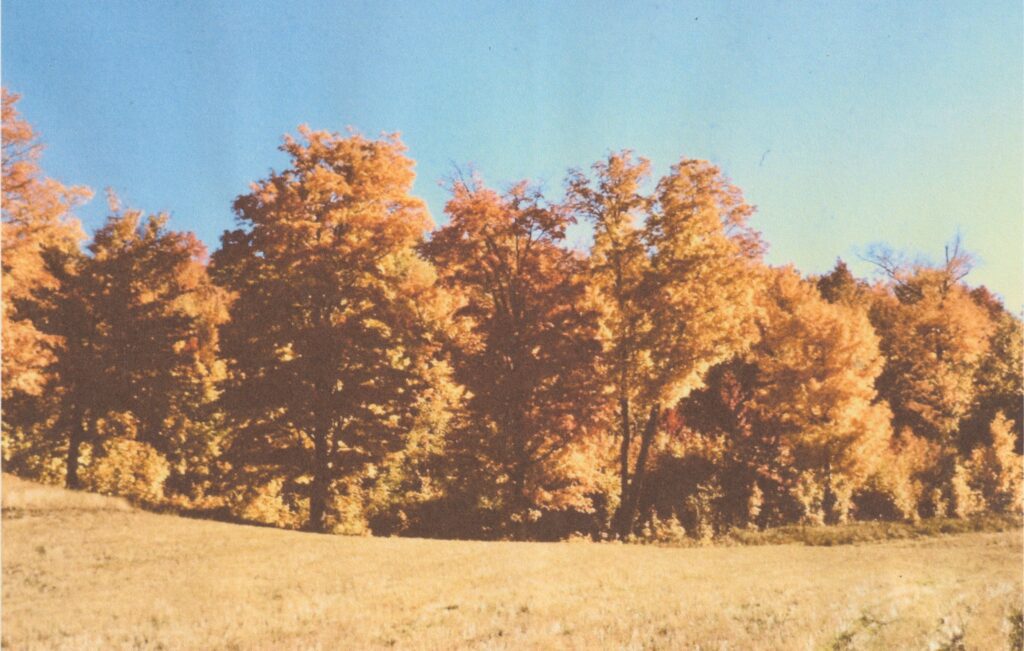
Fall
Farm work went right along, spring into summer, summer into fall. No sooner was the haying finished than the various grains ripened, ready to harvest. As with hay, this was strictly manual work, cut, rake, and carry the ripened grain into the barn in to the barn.
As with the haying, the whole family was involved. Once they were big enough, the girls were adept with a scythe, rake, or fork, as were the boys.
Potatoes and turnips were the main root plants grown on the farm. They were the main food for the family as well as being cut and fed to the cattle. With the grain safely stored in the barn, they were dug up and stored in to the root cellar. The month of October was taken up with this was cold, dirty, task. The girls and young Joseph picked the potatoes allowing the boys to go back to their potash production.
At the end of the harvest there was a great sigh of relief and a celebration was held. Family and friends who had contributed to the success of the harvest were invited to a hearty meal, music, and dancing, far into the night.
When the crops were all picked, cut, stored, for winter George began threshing in the barn. This was usually usually George’s domaine while the boys were at other jobs. All through late fall, winter, and spring, he threshed wheat, oats, and peas for his own use as well as, increasingly, for sale. The best grains of each crop were set aside for seed, the remainder was used for flour or feed.
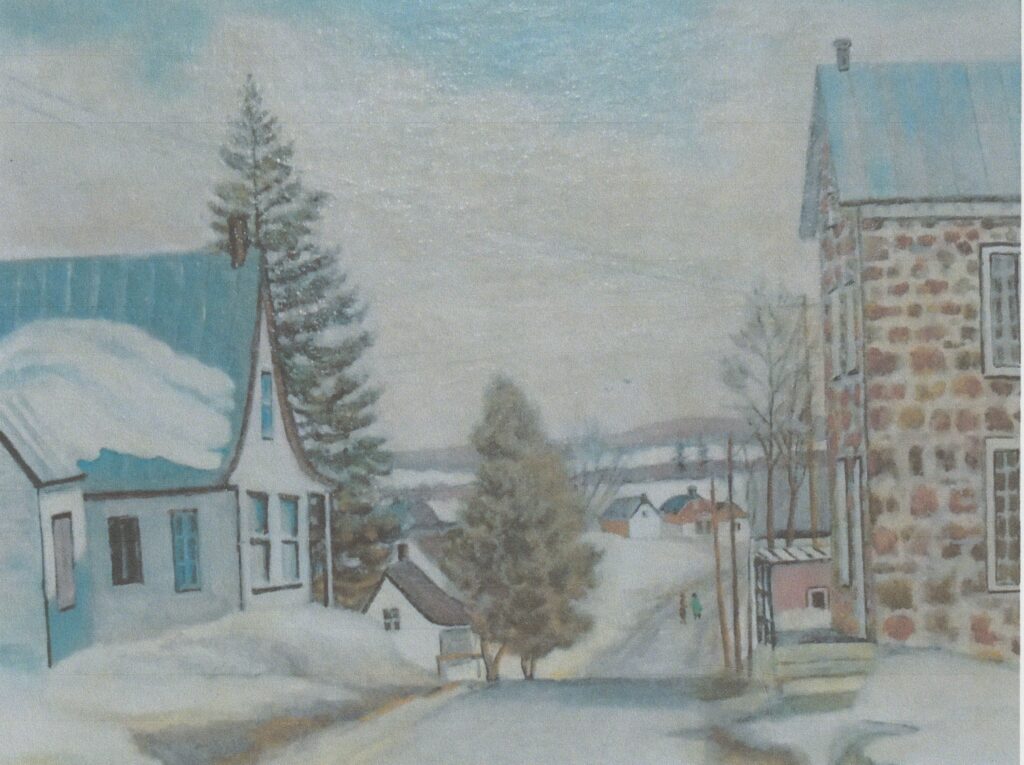
Winter
While winter brought respite from field work it did not bring rest. The animals still required care, wood for heating was to be cut and threshing continued all winter.
Production of the monthly barrel of pearlash to be delivered to Montreal kept the boys in the bush all winter.
Fifteen years after they had settled in Rawdon the Coppings owned several lots other than the original one. These lots also required some clearing and fields prepared for planting.
Sons George and William had applied for and received their own lots and George had purchased land from others. These properties needed clearing which could be done in winter when the time was available. The boys also made and delivered a barrel of potash to Montreal every month, all year round.
The boys went to the bush every day, with little exception, to make potash. Only the worst weather kept them at home. The weather might prevent them working outside but there was always much to do inside. The day was not wasted despite the weather. This was a time to repair and make equipment for the farm as well as the bush. Hay forks, rakes, wagons, and carts were all needed on a regular basis. Various types of sleighs and harness were also required to be repaired or replaced. The boys made moccasins and snowshoes, George made rope. This work was all done in the house.
Snow had to be shovelled around the house, stable and barn. During the winter the animals were brought into the stable and generally kept all together to keep each other warm. This could cause problems such as George reported, the horse stepped on his piglets killing them.
There was no water in the stable so a path was kept to the creek and a hole was chopped through the ice to allow the animals to drink.This in itself was a time consuming exercise.
Another winter caprice was maintaining the road open in winter. Each landowner was responsible for the maintenance of a specific sector of the road. During a snow storm a horse or ox was hitched to a light sleigh, called a stone boat, and driven up and down the road to pack the snow.
Four Seasons in the Home
While George and his boys worked outside the lad, the house was also a hive of activity. Elizabeth, the girls and young Joseph were all occupied looking after the household, garden and farmyard as well as contributing to the seasonal work outdoors.
Gardens, usually the responsibility of the ladies and children, were wrested from a clearing near the cabin.
The garden produced radishes, beets, carrots, parsnips, cabbage, spinach, lettuce, onions, melons, watermelons, and several types of herbs and berries.
Apple trees, plum and cherry trees were planted near the house. The Coppings had a pear tree in a sheltered area near the house. All these trees produced delicious fruit which was picked and cooked into jam, jelly, or juice. This latter frequently contained alcohol for ‘medicinal purposes’.
Flowers were planted around the door, along pathways, and in small open areas to counter the ugly roots and rocks that surrounded the home.
With the seeding done it was a matter of waiting for the crop to grow while keeping nature’s raiders at bay and removing the copious weeds that would choke the crop.
Weeding was done by a hand, task assigned to the younger children, both boys and girls. Little Henry would be heard running around the house shouting and whistling to scare off birds and animals that threatened the garden.
Thistles were the bane of weeders. Their stems were very rough and the roots resistant to pulling. Sore hands and sore backs were the reward for clearing these stubborn weeds.
There were also nature’s marauders – squirrels, crows, and Blue Jays, who had no qualms raiding the corn patch despite the prickly pumpkin leaves.
The youngest members of the family were put on sentry duty to scare the intruders off. The screams of the children often rivalling those of the raiders.
Wild life was tempted out of the forest to a new settlement which offered an easier and abundant supply of food than the forest.
Intruders, including foxes, skunks, and raccoons, with a taste for poultry and eggs were frequent raiders in fields and barns.
Joseph not old enough to be going to the bush with his older brothers was kept busy around the house. The older boys were in the potash making potash or attending bees in the neighbourhood. George was now busy around the house looking after the animals and the fields. Joseph was still learning with his father in the barn yard, in the fields as well as chopping and splitting wood for the house.
Clarinda, now nineteen years old, looked after the house during her mother’s ever increasing absences to attend births, illness, injury, and death.
Mary at ten was kept busy helping in the house. She and Eliza were sent off on foot to the general store when supplies, such as tea or candles, ran out.
All three girls were in the fields for planting and harvesting as well in the garden. In the spring they planted potatoes and in the fall dug them up and lugged them to the root cellar. They cut and raked hay and grain and worked in the garden.
While we might wonder at the girls working in the garden and fields, housework was definitely not for those of a delicate constitution. Just as manual labour dominated the field work, house hold chores were also demanding. Washing, ironing, cooking, baking, were all labour intensive activities requiring stamina and strength.
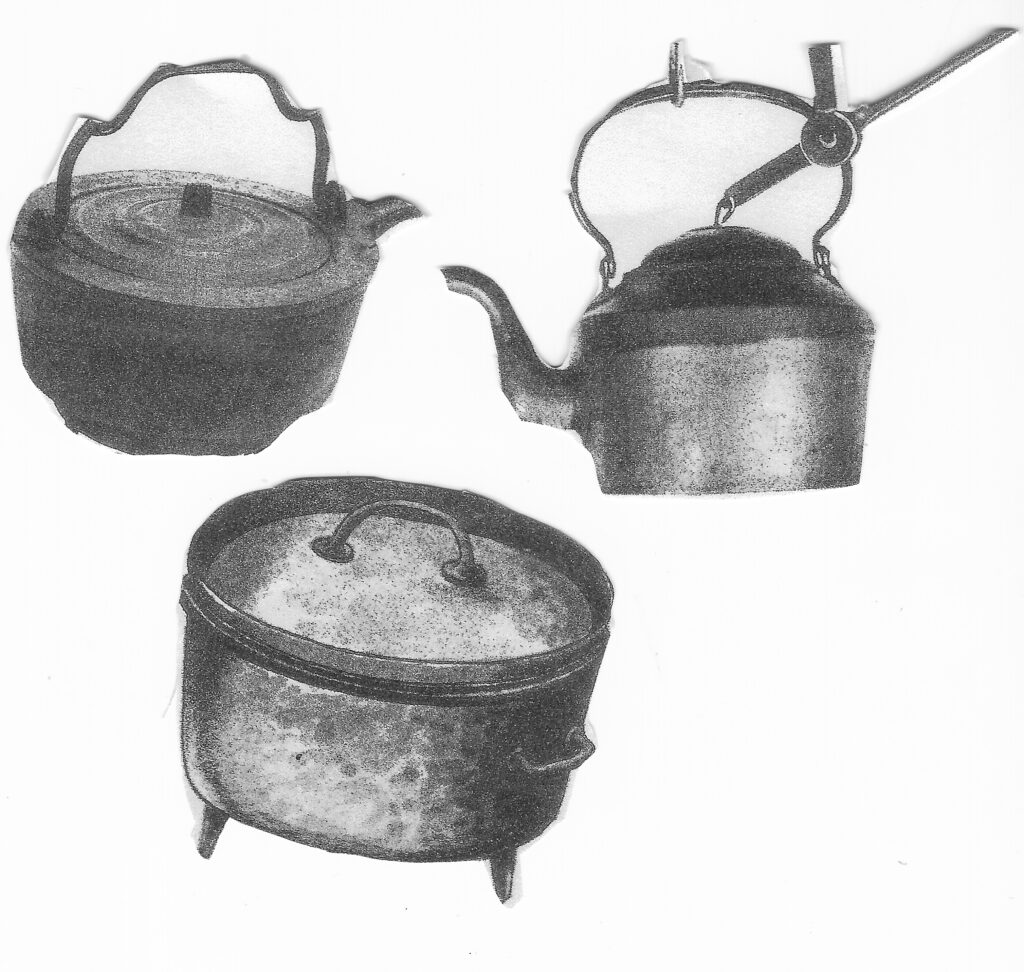
Cooking was done in large, heavy, iron pots that were a considerable weight empty and even more so when full. Carrying kettles of hot water and pots of stew, were heavy and caused many serious cases of scalding, particularly in young children. Over the years Elizabeth was called to tend many cases of scalding or burning, particularly in young children. She tended a neighbour’s child who was severely scalded.
Over the years Elizabeth was called to tend many cases of scalding or burning, particularly in young children. She tended a neighbour’s child who was severely scalded. and her son George’s boy, John, who had a leg burnt with ashes.
During the winter months there was wool and flax to spin and weave.
Working bees were frequent events happening all year round. Preparing the food for several men was a busy time for Elizabeth and the girls. Sometimes women helped prepare for a bee at a neighbour’s sending over foodstuff or going over to give a hand when one or more of the girls would go over to give a hand in the kitchen.
At a very young age Elizabeth’s girl would be sent off to do what was needed if helping hands were needed.
During the winter months there was wool and flax to spin and weave.
Working bees were frequent events happening all year round. Preparing the food for several men was a busy time for Elizabeth and the girls. Sometimes women helped prepare for a bee at a neighbour’s sending over foodstuff or going over to give a hand when one or more of the girls would go over to give a hand in the kitchen. At a very young age Elizabeth’s girl would be sent off to do what was needed if helping hands were needed.
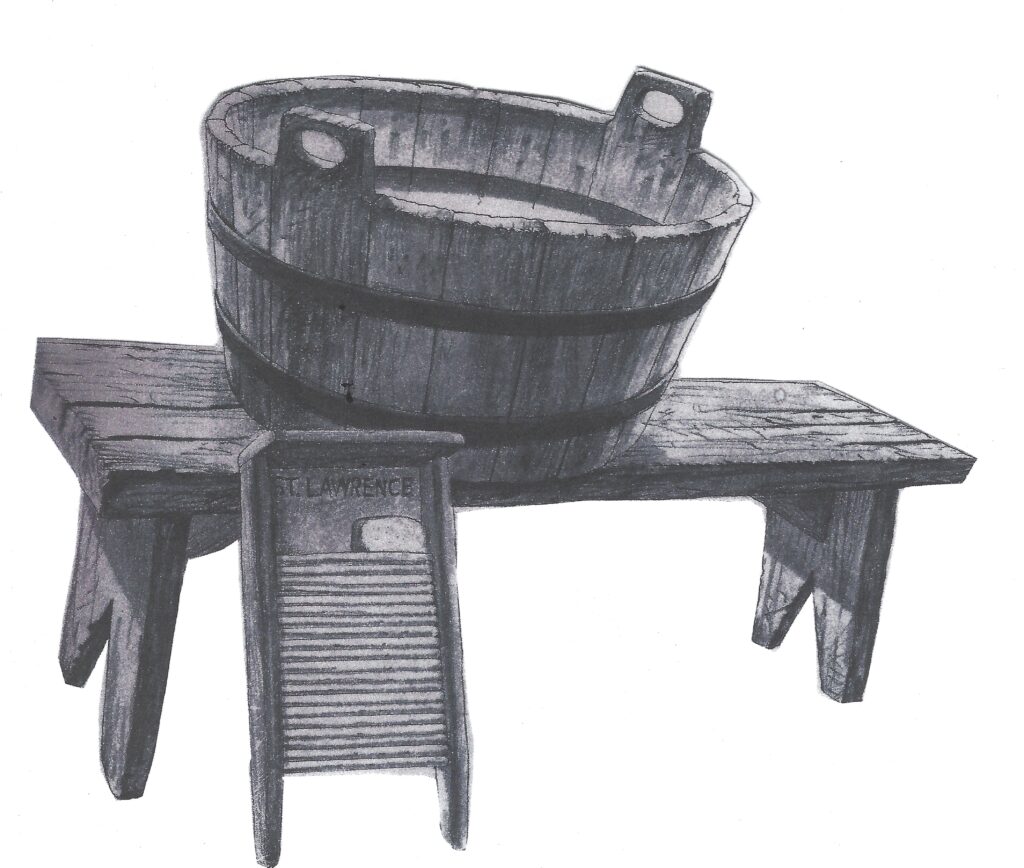
Whites needing to be washed were set to soak the night prior to washday. The water was drawn from the well and heated in iron kettle on the stove. Scrubbing soiled garments on a scrubbing board and wringing by hand was not an easy task. In fact wash day was literally that, a full day occupation. Whites were usually set to soak in hot water and hard soap the night before wash day.
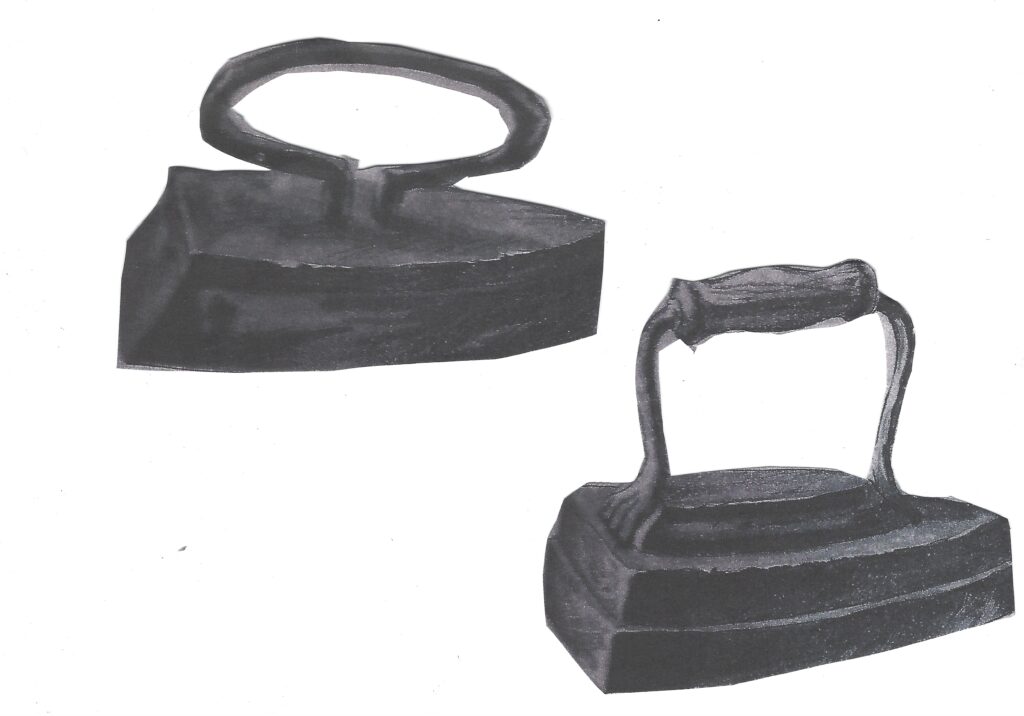
Irons were heated on the stove. Wool, cotton and linen were not easy to iron. Skirts and petticoats were long and full. Intricate lace and pleats took special care. Collars and cuffs were removed, washed and ironed separately before being sewn back into place.
During the winter months there was wool and flax to spin and weave.
Working bees were frequent events happening all year round. Preparing the food for several men was a busy time for Elizabeth and the girls. Sometimes women helped prepare for a bee at a neighbour’s sending over foodstuff or going over to give a hand when one or more of the girls would go over to give a hand in the kitchen. At a very young age Elizabeth’s girl would be sent off to do what was needed if helping hands were needed.